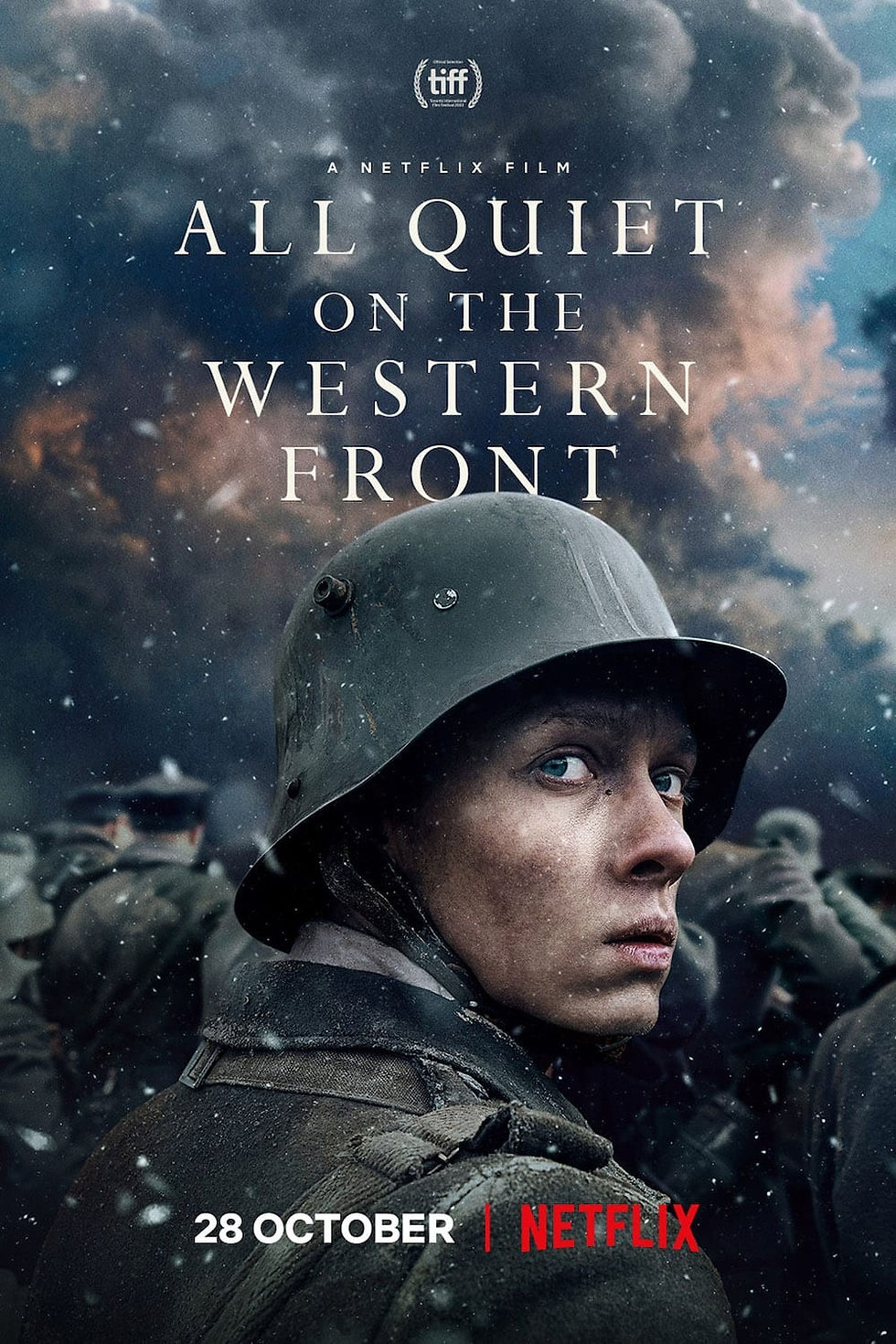Civil War ★★1/2
- 2filmcritics

- May 9, 2024
- 4 min read
Updated: Aug 24, 2024
Availability: Playing widely in theaters. No streaming at this time; see JustWatch here for future streaming availability.
Coming to a Country Near You
Time: the present. War zone: the US. Observers: War zone journalists.
The setting alone makes British writer and director Alex Garland’s dystopian vision of Americans at war with each other profoundly disturbing. Early scenes of battles in New York City are eerily reminiscent of January 6, as ordinary people attack law enforcement figures with sticks and anything at hand. It’s not difficult to see echoes in the campus clashes between pro-Israel and pro-Palestinian groups. One remembers Trump’s prediction of a “bloodbath,” should he lose the election this year.
Yet Garland (“Ex Machina” 2013) disengages his version of civil war from contemporary blue state/red state politics. The main opposition to the US government is the “Western Forces”—Texas and California, with their two-star flag, states that today could not find common ground on any issue. Florida is also seceding (no surprise there), and there’s mention of the “Maoists of Portland,” perhaps a reference to street battles in the wake of the murder of George Floyd.

Above the four journalists on their road trip. In the front passenger seat, left, Sammy (Stephen McKinley Henderson), and driving, Joel (Wagner Moura). In the back left, Lee (Kirsten Dunst) and Jessie (Cailee Spaeny).
The script follows four journalists on a road trip from New York City to Washington, DC, via a circuitous route through West Virginia and Charlottesville, Virginia, because major highways are closed with war debris or are too dangerous. Using the four observers—rather than soldiers engaged in combat as in “Dunkirk” (2017), “1917” (2010), and “All Quiet on the Western Front” (2022)—distances the viewer not only from the horrors of war, but from this US civil war and the lived reality it evokes, although Charlottesville is a marker of internal divisions and deadly conflict (“nice people on both sides”).
On their journey, the four encounter scene after scene of atrocities, calling forth the Holocaust (open pits of bodies), or “Deliverance” (1972, good old boys torturing their smarter former classmates for fun), or horror films (snipers in an abandoned “Winter Wonderland”—like films that take place in carnivals or ex-carnivals, “Nightmare Alley” [2021] and “Nope” [2022] among them). The journalists also encounter isolated—and isolationist—communities whose inhabitants proclaim they don’t want to get involved in what’s happening; they are trying to live lives of normalcy—though with snipers on the rooftops.

Jessie (Spaeny), right, wants to be
the successor to hard-boiled
war photographer Lee, left (Dunst).
The four journalists are a contrived collection of types: the hard-boiled, middle-aged war photographer Lee (Kirsten Dunst); the experienced Latino war-zone reporter Joel (Brazilian-born Wagner Moura); the seasoned but old and infirm Black New York Times writer Sammy (Stephen McKinley Henderson); and the upstart, 23-year-old Jessie (Cailee Spaeny, born in 1998 but looking more like 13), the definition of naïve, who is ready to follow her role model Lee into battle.
The acting is ordinary. Dunst plays Lee to a passive fault.
The acting is ordinary. Dunst plays Lee to a passive fault; Moura doesn’t find a place for his character (at one point, he seems to hit on the young girl); Henderson is his often-bombastic, didactic self; and Spaeny looks and acts too young to make Jessie a credible successor to Lee.
It’s possible that Garland intends to interrogate the virtue of journalistic “objectivity.”
Nonetheless, their journey is critical to the film’s claim to be a serious piece of work. It’s possible (though not clear in this faulty script) that Garland intends to interrogate the virtue of journalistic “objectivity,” an objectivity that has let Trump take up all the oxygen of the news cycle. The journalists’ narrative focuses on Lee’s inability to retain her objectivity and keep her emotions in check now that she is covering a war in her own country, and on Jessie taking her place, willing to take photos of death, even of her dying colleague.
A critical question, then, for “Civil War” is whether the barbarism—and there is plenty—is in service to something besides cinematic voyeurism, the kind of pleasure one feels from being frightened in a horror film. Does it rise to the level of “1917” or “All Quiet on the Western Front”? Or, because of Garland’s distancing of the story and the point of view from real politics—there’s no explanation of how the war developed and, although the film appears to be about the Trump era, there only a few scenes that suggest it—what stands out is blood and gore. And what’s the point of that?
One can argue that Garland, in disconnecting his civil war from the political and ideological currents that might have caused it, has abandoned coherence for killing, and lots of it, with Lee and Jessie, the eyes of the viewer, there to see and react to one horror after another. In that reading, it’s up to the movie-goer to bring meaning to the film by summoning Trump, with his love of violence in service to himself. For some, that will be a worthwhile experience; for others, it will be too much to ask.
Date: 2024
Director: Alex Garland
Starring: Kirsten Dunst, Wagner Moura, Stephen McKinley Henderson, Cailee Spaeny
Country: United States
Language: English
Runtime: 109 minutes
Other Awards: One nomination to date




Comments